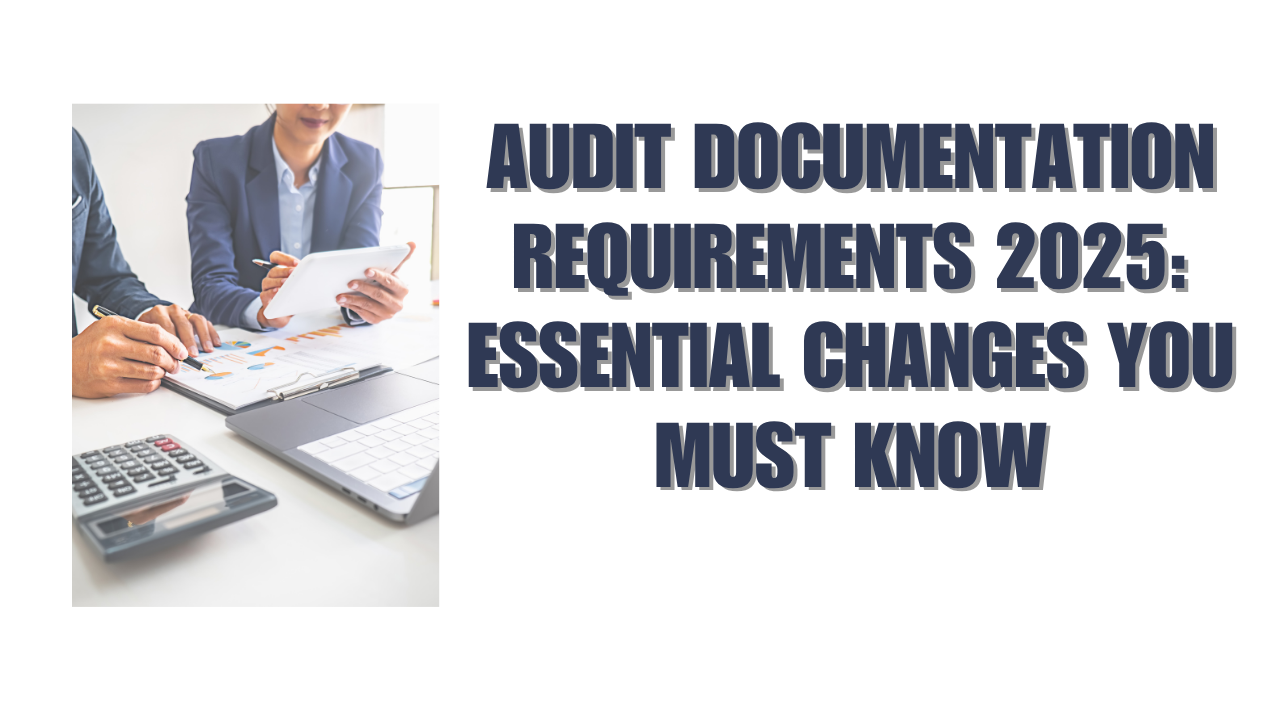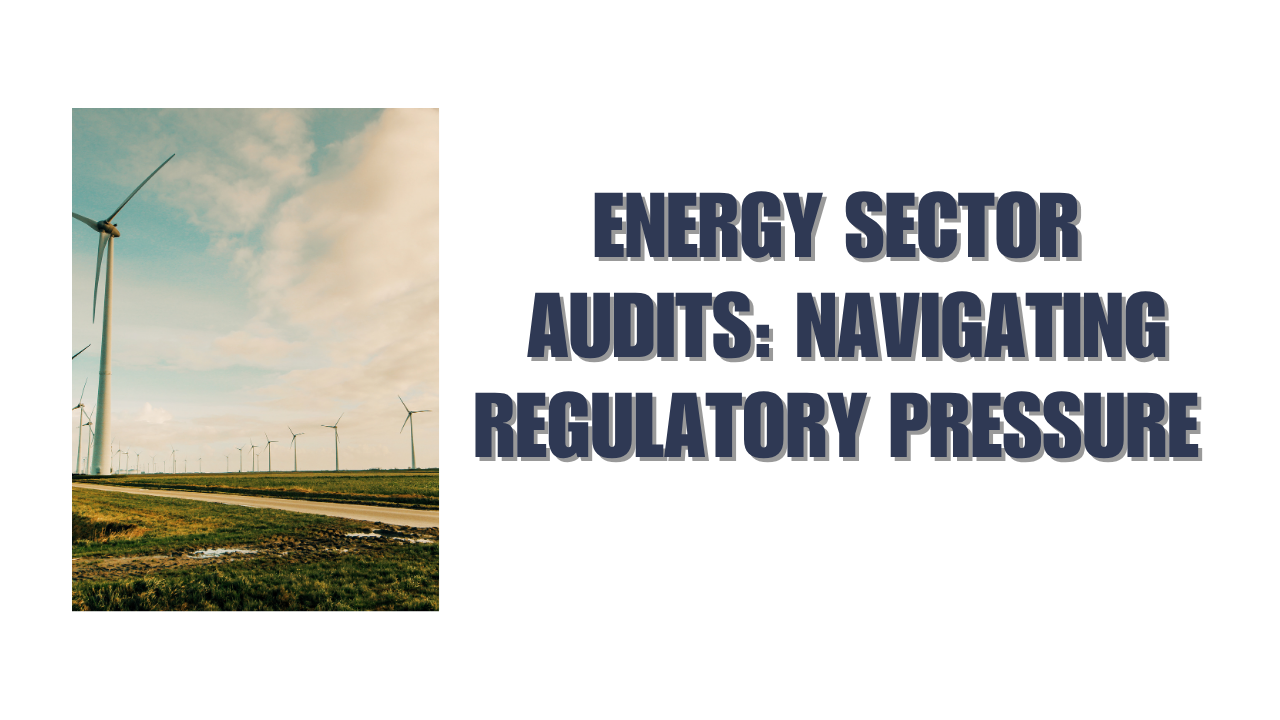The profession will face a game-changing shift in audit documentation requirements by 2025. Auditors must complete their documentation in 14 days instead of 45 days. This dramatic change has grabbed everyone’s attention in firms of all sizes, but there’s more to come.
The year 2025 will bring several new auditing standards that will revolutionize documentation practices. Quality management standards (QC 1000 and SQMS 1) stand out as they demand well-structured processes across firms and their networks to maintain audit quality. New standards like AS 1000 (General Responsibilities of the Auditor), AS 2310 (Auditor’s use of confirmation), and AS 2901 (Responding to engagement deficiencies) will also take effect. These updates show a transformation toward risk-based auditing that emphasizes technology integration, stakeholder communication, and ethical practices.
This piece will help you understand the most important changes to audit documentation requirements. You’ll learn about the faster documentation completion timeline and what it means for your practice. We’ll also guide you through preparing your firm to comply with these new standards. Understanding these updates is vital for every auditor to stay compliant and deliver quality audit services, regardless of firm size.
New Documentation Standards Effective in 2025
Auditors will face new documentation standards in 2025 that will change how they document their work and manage quality. These changes are the most important update to auditing standards that we’ve seen in decades. The impact will reach audit firms of every size.
AS 1000: General Responsibilities and Documentation Rules
The PCAOB’s new AS 1000 standard will unite and update existing auditing standards starting December 15, 2024. This standard reinforces auditors’ core duty to protect investors through accurate, independent audit reports. The standard makes documentation clearer by requiring details about who did the work, who reviewed it, and when the review happened. The biggest change cuts the documentation completion time from 45 days to just 14 days after report issuance. Smaller firms that audit 100 or fewer issuers get an extra year to adapt.
QC 1000 and SQMS 1: Quality Management System Requirements
QC 1000 brings a risk-based approach to quality control systems starting December 15, 2025. The standard updates the 2003 interim quality control standards and requires all registered firms to create a QC system, with requirements that match firm size. QC 1000 moves away from simple checklists. Firms must now set quality goals, spot quality risks, plan responses, and watch their progress. Each year, firms need to evaluate their QC system by September 30 and tell the PCAOB about results by November 30 using the new Form QC. Firms that audit more than 100 issuers yearly must create an External QC Function with independent members.
AS 2310: Confirmation Process Documentation Updates
The PCAOB’s updated confirmation standard takes effect for audits ending after June 15, 2025. The modern standard strengthens how auditors get audit evidence through confirmation, with special focus on electronic confirmations. Auditors must keep control of the confirmation process to stop information tampering. To name just one example, auditors must now confirm cash and equivalents with third parties or get evidence directly from external sources. The standard also limits negative confirmation requests as they don’t provide enough audit evidence alone.
AS 2901: Post-Issuance Engagement Deficiency Handling
The updated AS 2901 standard starts December 15, 2025. It explains what auditors should do when they find problems after issuing audit reports. Auditors who didn’t get sufficient appropriate evidence must either get more evidence or stop others from relying on the report. The response to other engagement issues should match how serious the problems are. Auditors must document all fixes thoroughly, following AS 1215 for working papers and QC 1000.82c for quality control system documentation.
Audit Documentation Completion Date Acceleration
The acceleration of documentation completion dates stands out as one of the biggest changes to audit procedures. This new timeline will change how audit teams wrap up their work. Different schedules apply based on firm size.
14-Day Rule for Annually Inspected Firms
Starting December 15, 2024, PCAOB will cut the audit documentation assembly timeline from 45 days to just 14 days after releasing the report. This shorter deadline mainly affects larger firms that issued audit reports for more than 100 issuers during calendar year 2024. PCAOB Chair Erica Williams says this change will “reduce the chance for improper alteration of audit documentation”. The Board can also start inspection processes sooner after audit completion.
The 14-day rule covers several engagement scenarios:
- Standard engagements must finish 14 days after report release
- Work with no issued report needs completion within 14 days of finishing fieldwork
- Discontinued engagements require final documentation within 14 days of stopping work
Auditors can’t delete or discard audit documentation after the completion date. They may add information later but must clearly note the date, preparer’s name, and reason.
2026 Effective Date for Triennially Inspected Firms
The PCAOB chose a phased rollout that gives smaller firms extra time. Registered public accounting firms that issued audit reports for 100 or fewer issuers during calendar year 2024 have until December 15, 2025, to meet the 14-day documentation requirement. These firms will first use this faster timeline for audits of financial statements in fiscal years starting after this date.
Quarterly reviews under PCAOB standards must follow the 14-day rule starting with the first quarter after initial covered financial statement audits. Calendar year reporting companies audited by annually inspected firms will start this practice in the first quarter of 2026.
Impact on Small and Mid-Sized Firms
Regional and smaller firms face notable challenges with this faster documentation timeline. Most firms now document audit work electronically – a fact PCAOB mentioned to support shorter timelines. Yet many smaller practices have always used the full 45-day period to finish their documentation.
The phased rollout recognizes these practical challenges. Triennially inspected firms get extra time to:
- Change their workflow
- Upgrade technology and documentation tools
- Train staff on faster completion methods
- Adjust resource planning during busy season
SEC Chair Gary Gensler supports shorter filing periods to boost transparency and cut fraud risk. Many regional firms worry about these changes affecting their PCAOB audits. The PCAOB addressed these concerns by giving smaller firms more prep time through staged implementation.
This move toward faster documentation fits with broader regulatory trends that focus on timing, transparency, and better investor protection. Firms must understand their specific timeline requirements based on size to plan and comply with these new documentation rules effectively.
Common Audit Documentation Deficiencies Noted by Inspectors
PCAOB inspectors have spotted several recurring problems in audit documentation, especially in the confirmation process. Auditors need to fix these compliance gaps before the 2025 standards take full effect, and with good reason too.
Failure to Verify Electronic Confirmations
Recent inspection reports show auditors often fail to verify the source of electronic confirmation responses. This creates serious risks to audit quality because electronic responses aren’t always reliable. At the time auditors receive confirmations by email or fax, they find it hard to prove who sent them and their authority. Here’s how auditors can reduce these risks:
- Call to verify both the source and contents of electronic responses
- Ask the sender to mail the original confirmation directly
- Document all verification steps in the workpapers
Inadequate Alternative Procedures
Inspectors keep finding that auditors don’t do enough alternative procedures when they don’t get confirmation responses. This weakens the whole process of gathering audit evidence. Auditors must use alternative procedures to get evidence that reduces audit risk to acceptable levels when positive confirmation requests go unanswered.
Alternative procedures for accounts receivable include checking recent cash receipts, shipping documents, or other client records. The same goes for accounts payable – auditors can check recent cash payments, third-party letters, or goods received notes.
Improper Use of Negative Confirmations
Auditors often misuse negative confirmations, which is a big problem. Negative confirmations give nowhere near as much audit evidence as positive ones because people only respond if they disagree with the information.
Negative confirmations shouldn’t be the only substantive procedure unless these conditions exist:
- Low risk of material misstatement
- Controls for the assertion work well
- Many small, similar items make up the population
- You expect very few exceptions
Lack of Control Over Confirmation Process
The biggest issue inspectors found was that auditors don’t keep proper control during confirmations. You retain control by setting up direct communication between the intended recipient and yourself to minimize risks of tampering.
Auditors should:
- Pick what to confirm
- Send requests directly
- Get responses directly
Lost control means clients might intercept and change documents. Even simple breaks in control can create problems – like when lawyers send audit responses to clients who forward them to auditors.
Audit firms that fix these common problems will be ready for the stricter documentation rules coming in 2025. This will also help them deliver better, more reliable audits.
Technology and Risk-Based Documentation Practices
Technology continues to reshape audit documentation practices. Regulatory standards change faster to keep up with these shifts. Auditors need to adapt their documentation methods to include new tools while they retain control over risk focus.
AS 1105 and AS 2301: Technology-Assisted Analysis
Recent changes to AS 1105 (Audit Evidence) and AS 2301 (The Auditor’s Responses to the Risks of Material Misstatement) specifically cover audit procedures with technology-assisted analysis of electronic information. These updates will take effect for fiscal years that begin after December 15, 2025. The changes help reduce chances that auditors who use technology tools will issue reports without getting enough appropriate evidence.
Key documentation requirements under these changes include:
- Evaluating electronic information reliability used as audit evidence, including testing controls over a company’s IT general controls
- Making sure audit procedures that use technology-assisted analysis meet their intended purpose, especially when used for multiple objectives
- Recording the investigation of transactions and balances found through technology tools, including whether they show misstatements or control deficiencies
Risk-Based Documentation Focus Areas
Risk-based documentation in 2025 needs auditors to focus on several new technology risk areas. Cloud spending will grow by 22.1% in 2025. Documentation should cover cloud governance, since 89% of companies now use multi-cloud approaches.
Other essential documentation focus areas include:
- Generative AI risks, including output reliability and potential biases
- Cybersecurity threats, as 74% of large businesses faced breaches last year
- Third-party risk management, especially for critical technology service providers
Integration of AI and Data Analytics in Audit Trails
AI and data analytics significantly change how auditors collect, analyze and document audit evidence. About 40% of audit teams plan major investments in generative AI within three years. This creates new opportunities but also brings documentation challenges.
Well-documented AI implementation helps auditors review all transactions instead of samples. They can spot complex patterns and find anomalies faster. Documentation must now go beyond traditional methods to show how these technologies support audit conclusions while maintaining professional skepticism.
Preparing for Compliance with 2025 Documentation Requirements
Getting ready for the audit documentation requirements 2025 takes a systematic plan that should start before the rules kick in. Your firm needs solid strategies to make sure documentation practices match what regulators expect.
Internal Training on New Standards
The right implementation starts when everyone understands the new standards clearly. Your firm should pick specific people or teams to handle quality management standards and lead the implementation. Teams need proper training on new standards, risk-based methods, and quality elements. The AICPA has a 6-hour course that shows you practical ways to create timelines and build risk assessments.
Using SQMS Implementation Checklists
Several organizations have created helpful checklists to make preparation easier:
- The AICPA QM checklist shows you the steps to put these new standards in place
- GAAP Dynamics gives out a free SQMS Implementation Considerations Checklist to help with adoption and compliance
- The PPC Guide to Quality Management compares old and new standards and lists major changes
These tools help you document your risk assessment process and show what steps you took to spot and evaluate quality risks.
Lining up Documentation with PCAOB Expectations
Your quality management system’s documentation needs more structure than before. This helps partners and staff understand and use the system better. Your firm should know the legal and professional rules about how long to keep and maintain engagement documentation. You’ll need to manage evidence safely and make sure you can retrieve supporting documents easily.
A Centralized Audit Evidence Repository
Automation can make evidence collection much smoother. You can save time by setting up regular requests instead of manual follow-ups. A centralized platform gives you a structured place to store everything with clear links between controls, frameworks, and evidence. You get automatic timestamps for submissions, instant reviewer alerts, last year’s response records, and live reporting.
Conclusion
The audit documentation requirements coming in 2025 will bring a fundamental change in how auditors work. This stands out as the most challenging part of these changes. Without doubt, speeding up the process needs major workflow adjustments. Smaller firms will benefit from implementing these changes in phases.
The new quality management standards go beyond shorter timelines. They create a risk-based framework where firms must spot quality risks early instead of using checklists. This change lines up with what regulators want – protecting investors through better documentation. On top of that, updates to confirmation processes fix old problems while accepting the role of electronic communications.
Technology plays a vital role in meeting these new requirements. Firms can optimize their documentation while keeping audit quality high by using data analytics tools properly. The core team needs proper training, and firms must invest in the right tech solutions.
Small and mid-sized firms face special challenges under these rules. They can get ready through well-laid-out implementation plans. Checklists, central evidence storage, and formal risk assessment documents will help meet PCAOB expectations. Whatever the firm size, preparation must start early for a smooth transition.
These 2025 documentation requirements mark a turning point for auditors. Firms that see these changes as chances to grow will come out stronger. They’ll deliver better audits while staying efficient. The groundwork for success starts now, before these standards take full effect.
Key Takeaways
The 2025 audit documentation requirements bring the most significant changes to the profession in decades, fundamentally altering how auditors document their work and manage quality.
- Documentation completion deadline slashed from 45 to 14 days for larger firms starting December 2024, with smaller firms getting until 2025 to comply with this accelerated timeline.
- New risk-based quality management standards (QC 1000 and SQMS 1) replace checklist approaches, requiring firms to proactively identify quality risks and implement continuous monitoring systems.
- Enhanced confirmation process documentation under AS 2310 strengthens electronic confirmation requirements and restricts negative confirmations to specific low-risk scenarios only.
- Technology integration becomes mandatory with updated standards requiring proper documentation of AI, data analytics, and technology-assisted analysis in audit procedures.
These changes represent a shift toward greater transparency, investor protection, and audit quality. Firms that embrace these requirements as opportunities for improvement rather than compliance burdens will be better positioned for long-term success in the evolving audit landscape.
FAQs
Q1. What is the new audit documentation completion deadline for 2025?
The new deadline requires audit firms to complete documentation within 14 days after the report release date, down from the previous 45-day timeline. This change takes effect in December 2024 for larger firms and December 2025 for smaller firms.
Q2. How do the new quality management standards differ from previous requirements?
The new standards (QC 1000 and SQMS 1) introduce a risk-based approach to quality control. Firms must now proactively identify quality risks, design appropriate responses, and implement continuous monitoring, replacing the old checklist-based approach.
Q3. What changes are being made to the confirmation process documentation?
The updated AS 2310 standard strengthens requirements for electronic confirmations, restricts the use of negative confirmations, and emphasizes maintaining control over the entire confirmation process to prevent interception or alteration of information.
Q4. How should firms prepare for the new documentation requirements?
Firms should conduct internal training on new standards, use SQMS implementation checklists, align documentation with PCAOB expectations, and maintain a centralized audit evidence repository. It’s crucial to start preparation well before the effective dates.
Q5. What role does technology play in meeting the new audit documentation requirements?
Technology integration is essential for compliance. Firms must document the use of AI, data analytics, and technology-assisted analysis in audit procedures. This includes evaluating the reliability of electronic information and ensuring technology tools fulfill their intended purpose in the audit process.






